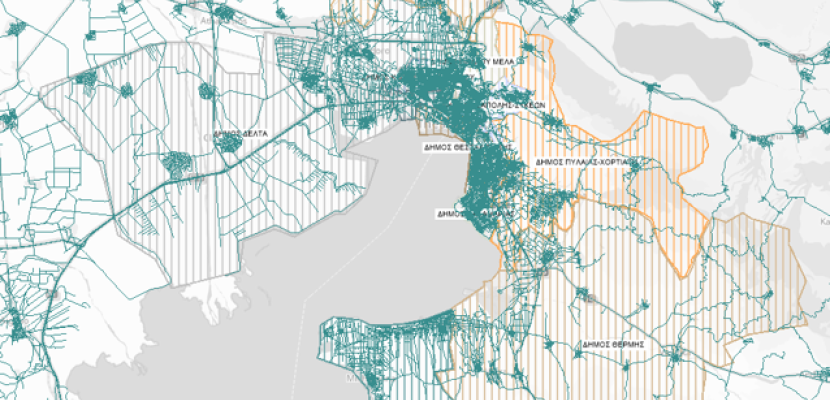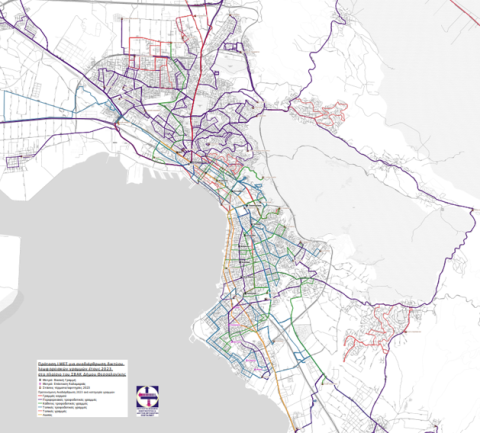
CERTH/HIT’s 4-step model for strategic decision making

About this good practice
Following the need for continuous, effective, inclusive and informed decision making in the wider area of Thessaloniki, CERTH/HIT developed and maintains a 4-step multimodal macroscopic traffic simulation model of the detailed large-scale network of the agglomeration of Thessaloniki since 2010. The model is part of Thessaloniki’s Smart Mobility Living Lab (LL) (https://smartmlab.imet.gr/), enabling continuous updates with historical and real-time data collected and managed by the LL.
CERTH/HIT uses the model to facilitate public authorities and PT operators to make their decisions. Key milestones on the use of the model include the:
• Sustainable Urban Mobility Plan of the Municipality of Thessaloniki (2017-2021), allowing for a major update of the model through an inclusive process that involved more than 12,500 citizens/ stakeholders
• fleet size scenario testing for the “Renewal of the Urban Bus Fleet for the Cities of Athens and Thessaloniki” (2021)
• estimation of the impacts of the construction of Thessaloniki’s flyover, a major infrastructural project (2023)
As the model integrates various data sources, its development and updates are subject to citizens’ inputs and collaboration among diverse stakeholders, key of them being local municipalities and PT operators (all involved in the scenario definition). Key beneficiaries are decision-makers, but citizens’ can only be benefit by the informed and inclusive planning offered by such a decision-support tool.
Resources needed
Investment is needed for the purchase of the software license and initial set-up of the model’s supply and demand (approx. 30 Person Months - PMs). (Data) costs for the updates of the model and PMs required for its maintenance heavily depend on the running project, but definitely should be secured.
Evidence of success
• 6 scenarios tested for Thessaloniki SUMP, including the modelling of new public transport (PT) modes; more than 15 KPIs calculated for scenario comparison & selection; mobility data from more than 10k citizens integrated
• 79 PT lines redesigned (including new PT modes) & 15 KPIs calculated for bus fleet scenario comparison and selection
• model use is continuous up-to-day (latest within 2024 for the testing of one-way interventions in 2 critical urban intersections in Thessaloniki).
Potential for learning or transfer
Traffic modelling has been widely used for SUMP development, monitoring and update and knowledge/ expertise around it has advanced a lot during the last decades. Nowadays, such modelling tools consist the main components of digital twins that every city/ region is trying to develop to support decision-making, tailor made to its own needs and characteristics. The synergy of public authorities and PT operators with a research body like CERTH/HIT, who undertakes the responsibility for developing and updating the model of Thessaloniki area, demonstrates the importance of developing co-operational business models for creating in-house capacities in the public organizations in order to handle such tools, face the innovation challenges and also create added value for the local society while reducing the corresponding cost.
Further information
Images

Good practice owner
You can contact the good practice owner below for more detailed information.
